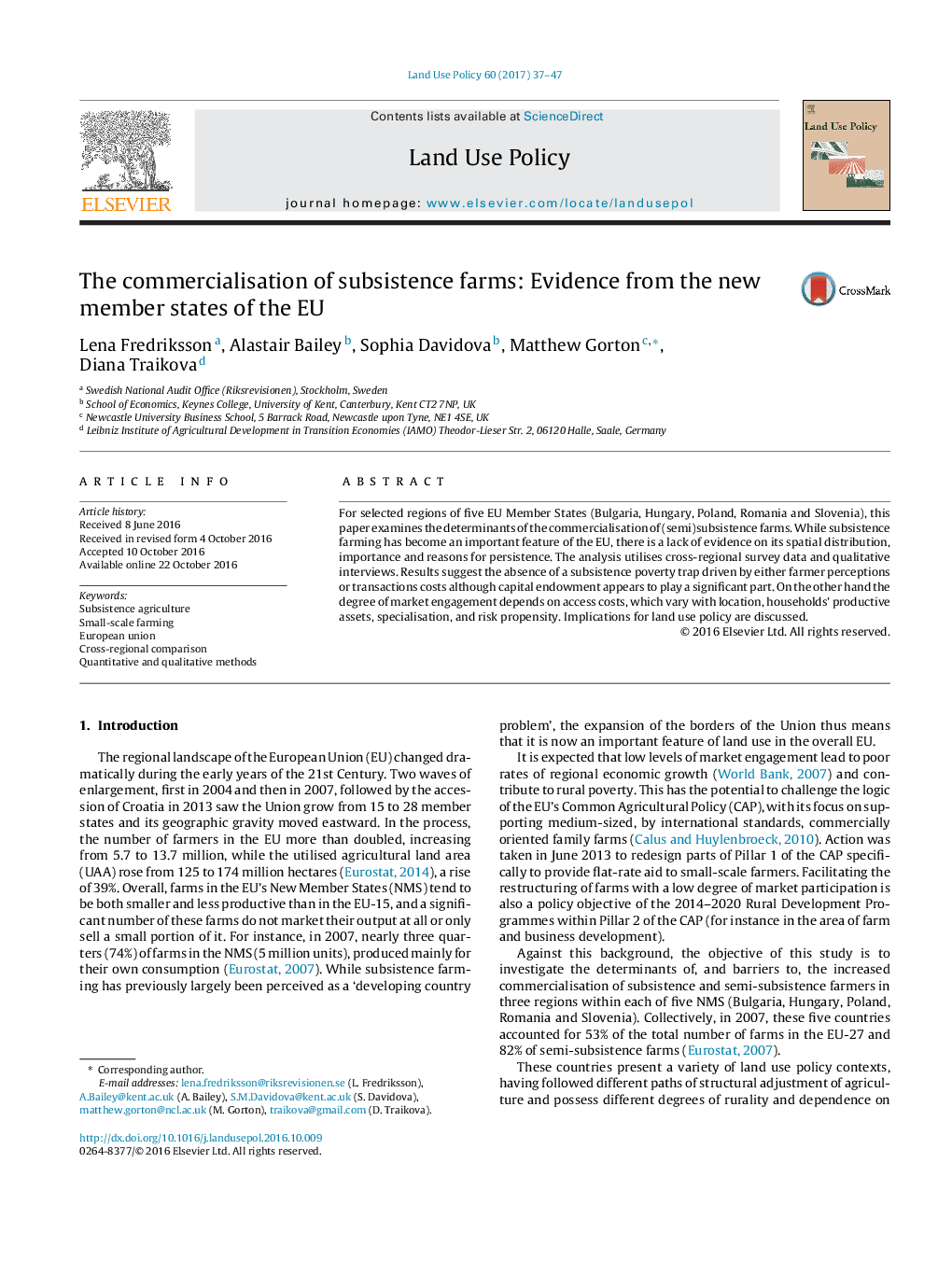| Article ID | Journal | Published Year | Pages | File Type |
|---|---|---|---|---|
| 6461380 | Land Use Policy | 2017 | 11 Pages |
â¢Commercialisation depends on access costs, asset endowments and risk propensity.â¢Absence of a subsistence poverty trap driven by farmer perceptions or transactions costs.â¢Absence of personal and farm security can impede commercialisation.â¢Family dynamics are critical to understanding commercialisation decisions.
For selected regions of five EU Member States (Bulgaria, Hungary, Poland, Romania and Slovenia), this paper examines the determinants of the commercialisation of (semi)subsistence farms. While subsistence farming has become an important feature of the EU, there is a lack of evidence on its spatial distribution, importance and reasons for persistence. The analysis utilises cross-regional survey data and qualitative interviews. Results suggest the absence of a subsistence poverty trap driven by either farmer perceptions or transactions costs although capital endowment appears to play a significant part. On the other hand the degree of market engagement depends on access costs, which vary with location, households' productive assets, specialisation, and risk propensity. Implications for land use policy are discussed.
